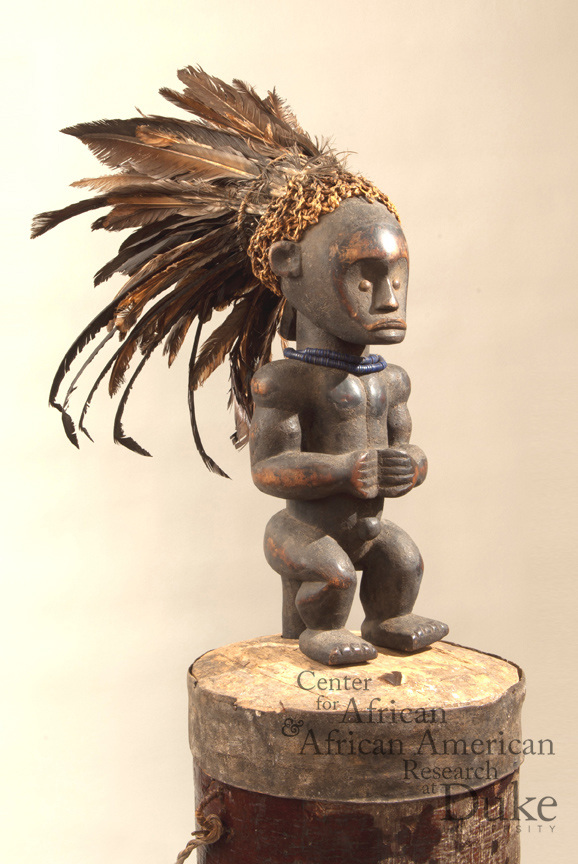





Full figure: 124.5 x 52.0 x 42.0 cm; ancestor figure: 71.0 x 44.5 x 33.0 cm; base: 44.5 x 34.0 x 30.5 cm
(centimeters)
The Fang are an ethnic group whose members primarily live in the African nations of Gabon, Equatorial Guinea, and Cameroon. These reliquaries, with their signature guardian figures, were created and maintained by initiates in the bieri secret society. By keeping the bones of the ancestors in a sacred place, the initiates and their families could more easily honor their forebears and petition them for aid.
The figure’s power was conveyed through its posture, gaze, and adornments, which in turn signified the ideals of male adulthood. The bent knees and symmetrical form represented a reserved attitude of someone who could nonetheless spring into action if threatened. The metal tacks used for eyes effected a penetrating gaze. On the other hand, the figure’s infantile proportions (large eyes and head, short limbs, protuberant belly, umbilical hernia) made it a childlike figure as well. This apparent contrast accords with traditional Fang notions of the cyclical nature of life, with infants having just arrived from the realm of the dead and elders growing closer to returning to it. The large head may also reference the skulls of the ancestors. The glass beads and headdress represent prestige items worn by respected members of society.
The reliquaries were carved by male members of the bieri secret society. Although certain carvers were recognized as masters at the art, any initiated man was permitted to carve one of the figures. Although some scholars have attempted to attribute different reliquary figure styles to different Fang subgroups, firm identifications are difficult due to widespread migration and communication between groups during the colonial and postcolonial periods.
Despite the power associated with the human reliquary figure, true power lay within the bones that were at one point contained in the barrel. Therefore, Western collectors were often able to persuade Fang bieri members to sell them reliquaries, provided the bones could be transferred to a new structure. Such reliquaries had become standard in Western collections of African art by the mid-20th century.
Contact
Sacred Arts of the Black Atlantic Project, Duke University
Box 90091
Durham, NC 27708
Email
jm217@duke.edu